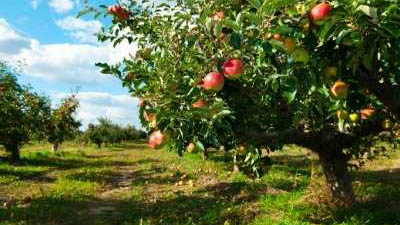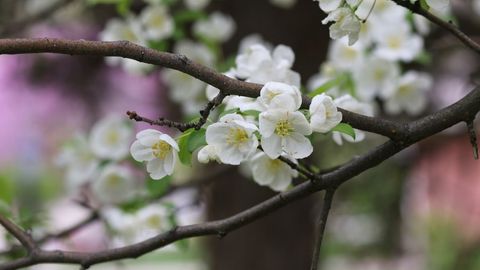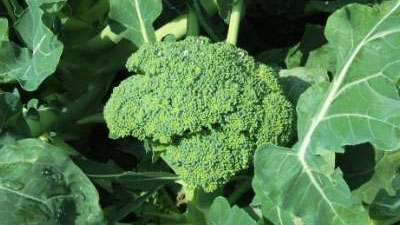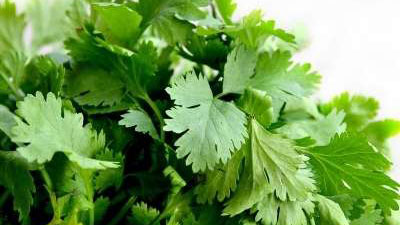How to Grow Shallots in Your Garden

Shallots are a cool-season vegetable that grows best in full sun and fertile, well-drained soils. Incorporate organic matter and a complete fertilizer into the soil before planting. Plant a bulb set or seeds in the early spring as soon as the ground can be worked. Bulbs should be planted 1–2 inches deep and 3–6 inches apart, while seeds should be planted ½ inch deep and thinned to 2–4 inches apart. After planting, side dress with fertilizer and repeat again in early July. Shallots should be regularly watered to ensure proper growth. Mulching can help to conserve water, reduce weeds, and provide extra nutrients. Control weeds, insects, and diseases throughout the year for optimal growth. Harvest the leaves for green onions during the year or the mature bulbs when most of the tops have fallen over. Bulbs store best in cool, dry conditions.
Shallot Varieties
Common shallot varieties include French Red, Gray Griselle, and Dutch Yellow. French Red shallot is the most common variety sold. Gray Griselle has the best flavor, while Dutch Yellow has a stronger flavor and tastes more like an onion.
How to Grow Shallots
Soil
Shallots grow in all soil types provided they are rich in organic matter, well drained, moist, and fertile. Shallots prefer a soil pH of 5.5 to 7.5.
Soil Preparation
Before planting, determine fertilizer needs with a soil test and then follow the recommendations given with the test report. If fertilizer applications are warranted, work the fertilizer into the top 6 inches of soil. If you fertilize with compost, apply no more than 1 inch of well-composted organic matter per 100 square feet of garden area.
Plants
Shallots are generally planted as bulb sets, but can also be planted as seeds. Both bulbs and seeds can be planted in spring as soon as the ground can be worked. Bulbs should be planted 1–2 inches deep. Seeds should be planted ¼ to ½ inch deep. Seeds begin to emerge 10–14 days after planting.
Planting and Spacing
Seeds should be spaced ½ inch to ¾ inch apart in rows 1–2 feet apart. After seeds emerge, thin to 2–4 inches apart in rows. Bulb sets should be planted at 3–6 inches apart in rows 12–18 inches apart. High density planting results in smaller, single bulbs, while wide spacing results in bulb clusters. To harvest shallots as green onions, keep the spacing close together. Shallots sets can be planted in autumn after the first frost for a late spring harvest. Very cold winters can cause yield reduction. If planting fall bulbs in zones 4 or 5, protect plants with a frost cloth covering or apply mulch to minimize winter damage.
Water
Shallots require regular watering for best growth and production. Soils need to be maintained near field capacity. Moisten the soil thoroughly to a depth of 8–12 inches and use drip irrigation if possible. Drought stress during growth decreases growth, yield, and overall weight. Overwatering contributes to bulb rot.
Fertilization
In addition to soil amendments added before planting, shallots should be given a base fertilizer of 1/2 pound of nitrogen fertilizer (21-0-0) per 100 square feet 30 days after planting and again 60 days after planting. Do not fertilize after mid-July as extra nitrogen stimulates late season leaf growth and reduces bulb storage potential.
Mulches
Organic mulches help conserve water, supply extra nutrients, and reduce weeding. Mulches are also used for overwintered shallots to minimize winter damage.
Problems with Growing Shallots
Weeds
Control weeds by regular shallow cultivation, but avoid root damage that slows plant growth. Weed control is particularly important during the first two months of growth when plants are growing slowly. Mulching with compost, grass clippings, or leaves will smother weeds.
| Insects | Identification | Control |
|---|---|---|
| Aphids | Larvae are yellow cylindrical maggots and adults are small black and yellow flies. Larvae bore between the leaf surfaces and disfigure the foliage. | Remove weeds and affected foliage. |
| Onion maggot | A white worm or grey-colored fly bore into the roots. Adults lay eggs around base of plant. | Destroy infected plants and apply insecticide at planting. Practice crop rotation. |
| Thrips | A tiny, thin insect that feeds on leaves and stems. Leaves turn silver or grey and may twist and die. Thrips hide where the leaf and bulb meet. | Thrips are best managed with cultural practices and natural biological control. Add compost, use mulches, or apply a stiff spray of water to wash thrips from plants. |
| Disease | Symptom | Control |
| Botrytis | Gray mold appears on leaves, stems, and buds. Small brown or grey sunken lesions appear on the side or near the base of the bulb. | Avoid overwatering, watering at night, and avoid getting water on the plant when watering. Remove any affected plant parts. |
| Downy mildew | Whitish-grey growth appears on older leaves, turning into yellow discoloration. | Avoid overwatering and overhead watering. Don’t crowd plants to provide proper air circulation. Practice crop rotation. |
How to Harvest and Store Shallots
Shallots should be harvested similar to onions. Shallot tops can be harvested throughout the year to thin out plants when their tops are 6–8 inches tall, or roughly 50–60 days after planting. For dry bulbs, harvest after the tops of plants fall over. Maturity date will vary depending on the variety. Lift the bulbs and gently separate the clusters into individual bulbs. Leave in the garden to cure for 1–2 weeks. The bulbs and leaves should be completely dry and the skin should be papery after curing. Either braid tops together or cut leaves 2 inches above the bulb before storing. Store in mesh bags in a cool (32°F–40°F), dry environment. Properly stored shallot bulbs can be replanted in the spring.
Shallot Plant Productivity
Each seed will yield one bulb. Bulbs planted in high density will yield one shallot per bulb planted, while wider spacing may produce clusters of 10–15 bulbs.
Shallot Nutrition Facts
Shallots are high in essential nutrients including dietary fiber, vitamin B6, vitamin C, vitamin A, folate, and manganese. They are very low in fats and carbohydrates. Shallots may act as antioxidant agents, improve heart health, and improve circulation.
Frequently Asked Questions
What happens when you fertilize shallots after late July?
Late season fertilization increases late leaf growth, which can reduce bulb size. When the shallot begins to bulb, the leaves stop growing, so late fertilizer causes extra leaf growth and doesn’t allow the shallot to bulb. It also reduces bulb storage potential and can contribute to bulb rots.
Additional Resources
- Davis, N. (2014). Spring onion and shallots - AUSVEG. Horticulture Australia. https://ausveg.com.au/app/uploads/2017/05/Spring_onion_shallot_SARP_report_14_March_2014.pdf
- Perry, L. (n.d.). Shallots and scallions. University of Vermont.
- Relf, D., & McDaniel, A. (2020). Onions, garlic and shallots [Fact sheet 426-411]. Virginia State University Extension. https://www.pubs.ext.vt.edu/content/dam/pubs_ext_vt_edu/426/426-411/SPES-254.pdf
- Russ, K., Polomski, R. F., Smith, B. H., & Williamson, J. (2016). Onion, leek, shallot, & garlic [Fact sheet]. Home & Garden Information Center, Clemson University. https://hgic.clemson.edu/factsheet/onion-leek-shallotgarlic/
Published September 2022
Utah State University Extension
Peer-reviewed fact sheet
Authors
Emmalee Rolfe and Dan Drost
Related Research







